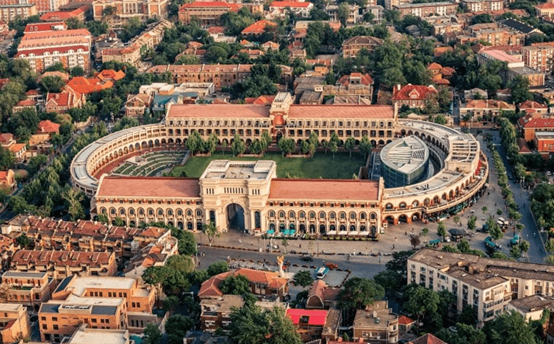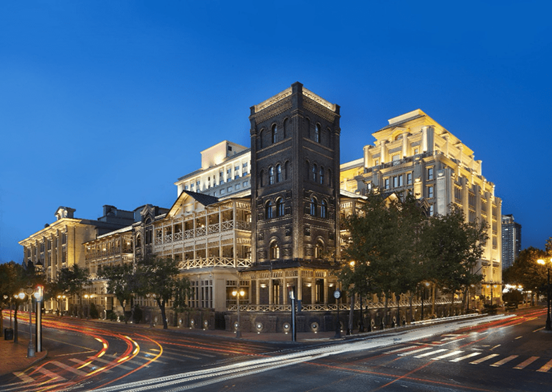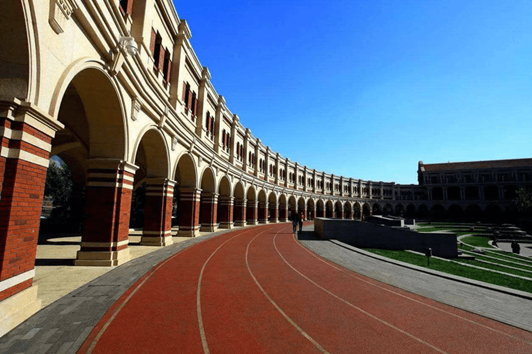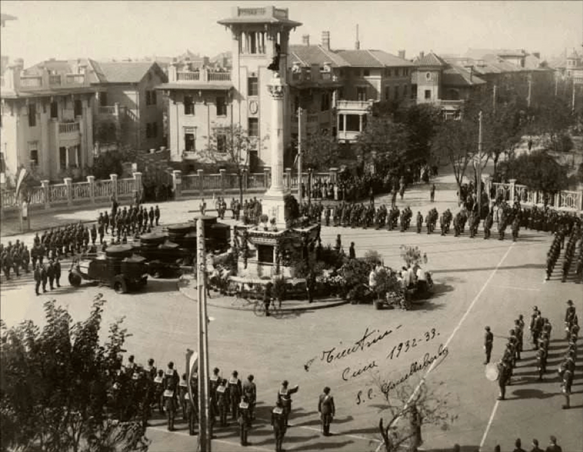Echoes of Concession: The Cultural Legacy of Tianjin's Foreign Enclaves
A Brief History of Concessions in Tianjin
A concession is an area in a city that is controlled by a foreign country rather than the local government. These areas often have special laws and regulations that differ from the rest of the city.
As is known to us all, in the late 19th centuries, numerous factors combined led to the establishment of multiple concessions during the late Qing Dynasty, which became areas of privilege for foreign powers, deepening China's semi-colonial status.
Tianjin has a rich concession culture because it was an important port city in China during the 19th and early 20th centuries. After the Opium Wars, foreign powers, such as Britain, France and Japan, established concessions in Tianjin to facilitate trade. These concessions allowed foreigners to live and do business there, leading to a mix of cultures.
Today, you can still see the influence of this history in Tianjin's architecture, streets and local customs, making the city a fascinating blend of Chinese and Western cultures.

Here is where the story begins...
After 1860, the British established Tianjin as a trading port and seized the opportunity to set up a British concession there. Over the following decades, Tianjin became a major northern port, facilitating trade between North China and countries around the world. Supported by the Self-strengthening Movement (洋务运动)and the Beiyang Army warlords(北洋军阀), various foreign powers arrived in the city, leading to the establishment of concessions by nine nations: the United Kingdom, France, the United States, Germany, Japan, Russia, Italy, Austria-Hungary and Belgium.
The British concession, as the earliest foothold of foreign powers in Tianjin, benefited from its first-mover advantage. In 1902, it merged with the American concession, becoming the largest and longest established among the nine concessions in Tianjin. Notable establishments in the British concession included HSBC, Jardine Matheson, and the Astor Hotel, with the Astor Hotel being the most famous.
The Astor Hotel was founded in 1863 by British missionary John Innocent, who purchased land within the concession and constructed the hotel. He named it Astor based on the phonetic translation of his surname and the teachings of Mencius, which emphasize virtue. The hotel featured Victorian decor throughout, with classical woodwork and crystal chandeliers. An elevator installed in 1924 by the Otis Company, still in operation today, is the oldest working elevator in China.

Astol Hotel
As the most renowned hotel in North China at the time, the Astor Hotel hosted numerous famous guests, including Sun Yat-sen(孙中山), Mei Lanfang(梅兰芳), and Feng Guozhang(冯国璋). Even U.S. President Herbert Hoover stayed there while working as a mining engineer in Tianjin.
Legendary stories abound, such as the dance between China's last Emperor Puyi(溥仪)and his empress Wanrong(婉容), as well as the romance between Zhang Xueliang(张学良) and Zhao Yidi(赵一荻,also known as Zhang Xueliang‘s second wife). After the founding of the People’s Republic of China, the hotel also hosted prominent figures like Ngapoi Ngawang Jigme(阿沛·阿旺晋美)and Premier Zhou Enlai(周恩来). Today, the Astor Hotel remains one of Tianjin's most luxurious venues, serving as the prototype for the Tianjin Pavilion at the 2010 Shanghai Expo.

The Minyuan Stadium
In addition to these prestigious locations, the British concession featured a sports venue—Minyuan Stadium (民园体育场). Founded by the Scottish athlete Eric Liddell, who won the gold medal in the 400 meters at the 1924 Paris Olympics, the stadium underwent significant modernization after Liddell moved to Tianjin in 1925 to teach running. He upgraded the original track, lighting, and stands, transforming it into a premier athletic facility in China and Asia. The stadium hosted its inaugural event, the Tianjin International Athletic Meet, in 1929.
In contrast, the French concession has a more vibrant local atmosphere, with the most representative site being Quanyechang (劝业场, the Fair Price Store) on Binjiang Road. It was one of the largest shopping and entertainment venues in North China, known for its saying: "In the south, there’s Shanghai Great World (上海大世界); in the north, Tianjin Eight Great Tians (八大天)." Here, "Eight Great Tians" referred to eight theaters, film houses, and tea houses named with "Tian," which served as major social hubs for Tianjin’s elite. The Tianhuajing Theater (天华景) was the most visited place for Prince Qing (庆亲王) of the Qing dynasty, who even participated in the play adaptations of Journey to the West.
Today, the area around Quanyechang remains one of Tianjin's most bustling shopping districts, epitomizing old-money charm.
After World War I, between 1919 and 1924, China gradually reclaimed territories from the Austro-Hungarian Empire, the German Empire, and Tsarist Russia following the October Revolution. By 1931, negotiations led to the recovery of the Belgian concession, leaving only the British, French, Japanese, and Italian concessions.
While the British and French concessions were known for their vibrant nightlife, the Japanese concession fell into disrepair, becoming notorious for its disorder, including opium dens, brothels, and gang-controlled areas. It also included the site of the former Haiguang Temple (海光寺), a significant temple that was completely destroyed during the Boxer Rebellion. Initially, the Japanese built barracks on the site, which were later converted into the Japanese High Command for North China after the Marco Polo Bridge Incident (卢沟桥事变) in 1937. Many resistance fighters suffered torture and death there.
In contrast, the Italian concession was better managed. With a prime location near the Haihe River, just two kilometers from Tianjin Railway Station, the Italians embarked on real estate development, constructing Mediterranean-style residences inspired by cities like Venice, Naples, and Florence. They even built Tianjin's first asphalt road.

The heart of the Italian concession was Marco Polo Square, featuring a statue of the Victory Goddess, erected to commemorate World War I. This neoclassical monument included fountains on all four sides, Corinthian columns, and a two-meter-high statue of the Goddess of Peace holding an olive branch, symbolizing friendship and peace.
With the outbreak of the War of Resistance against Japanese Aggression in 1937, the British and French concessions, like those in Shanghai, became islands of refuge. However, this situation was short-lived. In 1941, following the outbreak of the Pacific War, Japanese forces occupied both the British and French concessions, transferring control to the Wang Jingwei regime(汪伪政权). After the fall of Fascist Italy in 1943, the Japanese again disregarded Chinese protests and handed over the Italian concession to the Wang regime. Although these concessions were nominally managed by Chinese individuals, the Wang regime acted merely as a puppet for the Japanese, halting the normal commercial activities that had previously thrived.
By 1945, with the end of the war and the surrender of the Axis powers, these concessions were reclaimed by China.
Today, the small Western-style buildings and public parks from the former concessions have been restored and renovated, serving as offices for banks, financial institutions, and public departments in Tianjin, as well as recreational and educational spaces for citizens, reflecting the remarkable transformations of modern China.
Related articles
-
 Shidiao: the Opera that Brings Reputation to Tianjin as “City of Folk Arts”
Shidiao: the Opera that Brings Reputation to Tianjin as “City of Folk Arts”More
-
 Clay Sculpture Legacy: the Century-old Tradition
Clay Sculpture Legacy: the Century-old TraditionMore
-
 Tianjin Song Art Troupe: the Storytelling Accompanied with Rhythmic Drums
Tianjin Song Art Troupe: the Storytelling Accompanied with Rhythmic DrumsMore
-
 Tianjin Pingshu:One of the Funniest Folk Art Forms in China
Tianjin Pingshu:One of the Funniest Folk Art Forms in ChinaMore
-
 Tianjin's Canal Culture: A Vital Hub of the Grand Canal System
Tianjin's Canal Culture: A Vital Hub of the Grand Canal SystemMore
